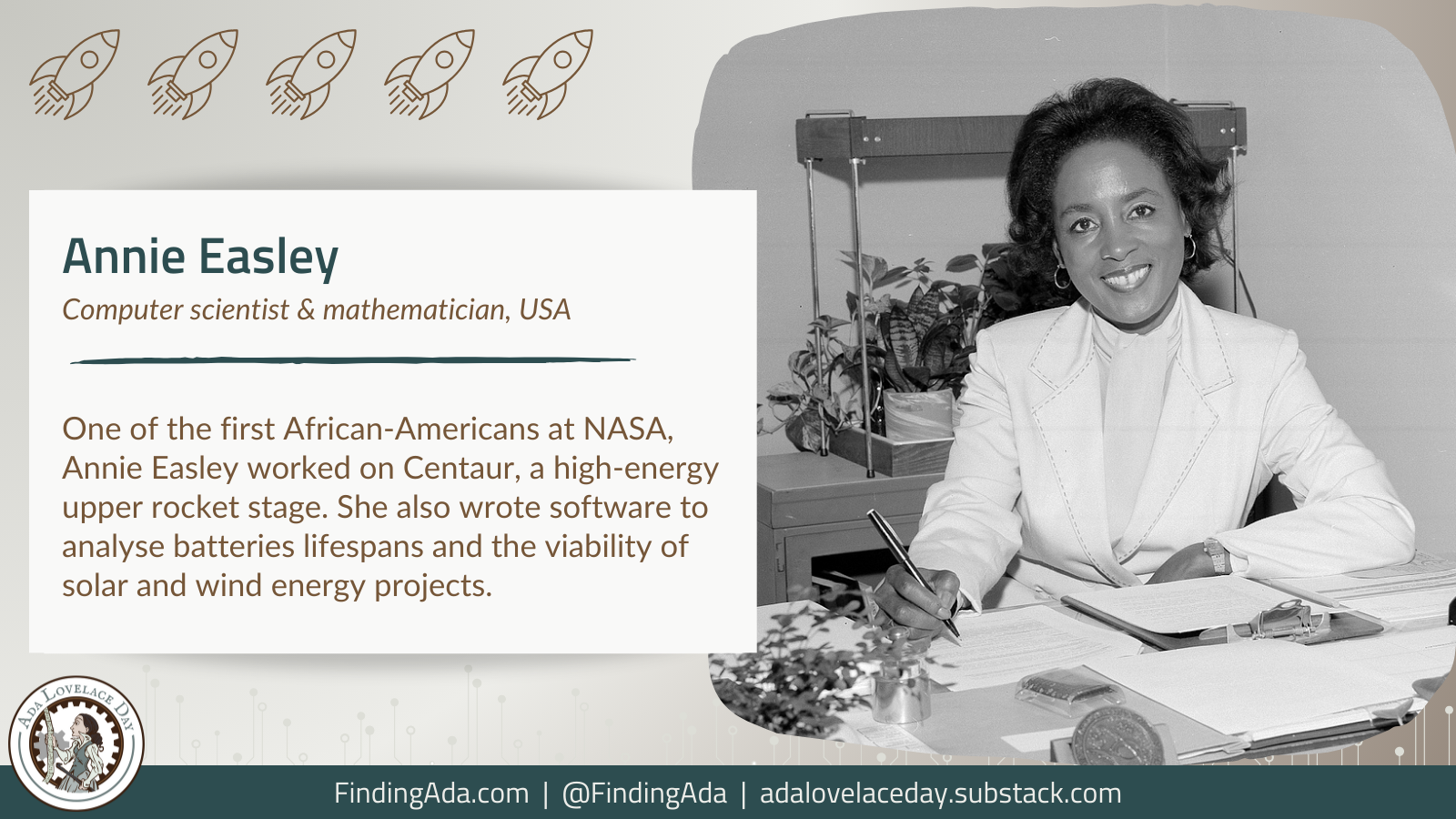Annie Easley
Annie Jean Easley was an American computer scientist, mathematician and rocket scientist. As one of NASA’s first African-American employees, she helped develop software for the Centaur rocket stage, which enabled several landmark spaceflights in the later 20th century. Over the course of her career, she also worked on technologies that foreshadowed the creation of hybrid vehicles, and developed computer code that later aided the creation of sustainable energy projects.
Easley was born on 23 April 1933 in Birmingham, Alabama. She majored in pharmacy at college in New Orleans, but her academic career was thwarted when she moved with her husband to Cleveland, Ohio, where there were no pharmaceutical schools. In 1955, aged 22, Easley read a newspaper story about sisters who worked as “computers” for the National Advisory Committee for Aeronautics (NACA). She applied for a job at the NACA Lewis Flight Propulsion Laboratory in Cleveland and was hired within two weeks, becoming one of just four African-Americans among around 2,500 employees in her division.
At NACA, which became NASA in 1958, Easley was tasked with calculating complex mathematical functions for scientists. After electronic computers were introduced, her role switched to mathematician and computer technician. She taught herself computer programming languages and contributed to the development of battery-powered vehicles, precursors to today’s hybrid cars. She also started working directly on space research – contributing to shuttle launches and running simulations to help test and design a NASA nuclear reactor.
The most influential period of Easley’s career at NASA arguably began in the early 1960s, when she started work on nuclear-powered rocket systems. She was a leading member of the team that developed the Centaur rocket, the United States’ first high-energy upper stage (a launch vehicle used to propel aircrafts into exceptionally high orbits). The Centaur had its first successful launch in 1963 and without it later launches of historic space shuttles and satellites would not have been possible. These include exploratory spacecraft like the Surveyor, Pioneer, Viking and Voyager, as well as the Cassini-Huygens, the first probe to enter Saturn’s orbit.
NASA’s space programme faced huge cuts in the 1970s, and Easley – who had never completed her undergraduate studies – suspected she would need a degree to protect her position. She achieved a bachelor’s in mathematics from Cleveland State University in 1977, having worked full-time throughout her studies (NASA denied her the financial aid it gave other employees to further their education). She then began work on energy issues such as damage to the ozone layer, developing and implementing computer applications that were later used to discover more efficient energy conversion systems and viable solar and wind projects.
Easley retired from NASA and science in 1989, and died on 25 June 2011, aged 78. Four years after her death, she was posthumously inducted into the NASA Glenn Research Center’s Hall of Fame. On 1 February 2021, the International Astronomical Union (IAU) named a crater on the Moon in Easley’s honour, in recognition of her contribution to space travel.
Further Reading
- Annie Easley, Wikipedia
- Computer Scientist of the Month: Annie Easley, Isaac Computer Science
- Annie J. Easley (1933-2011), Jana Carpenter, Black Past, 13 March 2020
- Annie Easley helped make modern spaceflight possible, Nicole Lee, Engadget, 19 July 2019
- Meet Annie Easley, the barrier-breaking mathematician who helped us explore the solar system, Dan Samorodnitsky, Massive Science, 26 November 2018
Written by Moya Crockett, with thanks to Stylist for their support.
